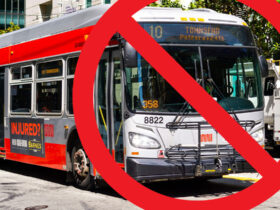One of the decisions to make when buying your first defensive handgun is which caliber to choose. Go to any online gun forum, and you will find threads with people arguing over which calibers are the best and worst for self-defense. Inevitably, someone will blurt out the well-worn opinion that caliber doesn’t matter if you place your shot well. While there is truth to that, just ask Bella Twin, a Cree woman, who killed a world-record grizzly bear with a single shot from a .22 rifle; it’s not something I would want to try to recreate.
The reality is that some calibers are not ideal choices for a self-defense handgun. Nevertheless, manufacturers produce and sell guns in underpowered calibers that are touted as good choices for concealed carry, and people buy them. In all fairness, some people have legitimate physical limitations that prevent them from being able to shoot 9mm or even .380 handguns, and for them, an underpowered .22 is better than no gun at all. But they are the exception rather than the norm, and for most people, underpowered handgun calibers should be avoided.
Why Are Some Calibers Too Underpowered for Defense
All handgun caliber cartridges are underpowered when compared to rifle caliber cartridges. None of them has the same capability to reliably stop a threat with a single shot. If you doubt that, watch bodycam videos of police shootings; they are easy to find online. Police often shoot so many rounds, they must reload. Elisjsha Dicken, an armed citizen, hit the Indiana Mall shooter eight times with a 9mm before he stopped him.
Handgun cartridges do not produce the shock of a temporary cavity the way more powerful rifle rounds do. Consequently, handgun cartridges rely on penetration to hit a vital organ, and expansion to create a larger wound cavity. The FBI standard for penetration is a minimum of 12” and a maximum of 18” to avoid overpenetration. Expansion relies heavily on muzzle velocity and the design of the bullet. Given that you are already working at a disadvantage relying on a handgun for self-defense, why would you want to put yourself at even more of a disadvantage than you already are?
Handgun Calibers to Avoid
This is not a discussion of specific guns to avoid for self-defense, it is a discussion of calibers that are less than ideal when staking your life on their capability to end a threat. The interesting thing is that manufacturers still offer handguns chambered in these calibers and even recommend them for concealed carry. Most are small and easy to conceal, but offer poor performance against an assailant. Add the potential complication of an attacker high on alcohol or drugs, or even just wearing heavy clothes, and their effectiveness is even worse.
.22LR
The .22LR is one of the iconic calibers of the Western world. Practically every household that has more than one gun includes a .22 rifle or pistol. They are inexpensive and fun to shoot, and ideal for training new shooters of any age. The caliber also produces virtually no recoil, making it easy for people with physical limitations to shoot. However, it is a very light bullet with mediocre penetration and limited capacity for creating a large wound channel. Beyond that, rimfire ammunition is less reliable than centerfire cartridges. If you simply cannot handle anything larger, Beretta and Ruger make .22LR pistols for concealed carry.
.25 ACP
The .25 ACP hit the market back in 1905 as a caliber for Browning’s FN pocket pistols. It is the most anemic of all the calibers on this list and is even outperformed by the .22LR. Beyond that, almost no quality company produces a reliable .25 ACP pistol. Of all handgun calibers, it is by far the worst for self-defense.
.32 ACP
The .32 ACP is another John Browning creation that dates back to 1899. Unlike its smaller .25 cousin, the .32 ACP performs slightly better than the .22LR, although that is still below what I would like for a concealed carry gun. Also, unlike the .25, there are reliable handguns available in the caliber, such as the famous Walther PPK and the Kel-Tec P32. Still, the cartridge’s performance is well below the ideal for a self-defense handgun.
9×18 Makarov
The 9×18 Makarov was adopted as the Soviet military sidearm in 1951. It has somewhat better performance than the .380 ACP, and there are some decent quality guns chambered in it, most of which are manufactured in Eastern Europe. The main problem with the cartridge is the limited variety and availability of good defensive JHP ammo. For the same cost and better ergonomics, you would be better off with a 9mm Luger.
.410 Shotshell
Some revolvers, such as the Taurus Judge, can shoot .410 shotgun shells. The problem with using .410 shot for defense is the ability of the round to stop a threat. Granted, if you were able to hit the assailant in the face with #4 shot at a range of, say, 20 feet or less, it would probably ruin their day. Unfortunately, the penetration of .410 shot from a handgun with a 3” barrel and no choke is unlikely to stop a determined threat, especially if they are high or wearing heavy clothes. Even shooting .410 slugs will not match the performance of a quality handgun round.
Best Caliber Choices for Self-Defense
When selecting a caliber for a self-defense handgun, it’s advisable to choose cartridges that take advantage of modern ammunition.
.380 ACP
The .380 ACP is the smallest caliber I would recommend for self-defense. Its terminal ballistics rate somewhere between 32 ACP and 9×18 Mak. It produces slightly less recoil than a 9mm, and firearms chambered in .380 sometimes offer greater capacity, but it does not perform as well.
9mm Luger
Whatever else you like or don’t like about it, 9mm Luger has become the Gold Standard for self-defense ammunition. There is an excellent range of effective cartridges available, and 9mm handguns can be very compact.
.40 S&W
.40 S&W was modified from the 10mm back in 1990 to give FBI agents a better cartridge than the 9mm of the day. Improvements in the 9mm since then have prompted the FBI and most law enforcement agencies to go back to the 9mm, but the .40 S&W remains a decent cartridge.
.45 ACP
There is a reason the .45 ACP has been around so long. Although not as popular as the 9mm, it is a powerful cartridge that produces large wound channels. Its main drawback is the size and weight of handguns chambered in it.
.38 Special
Revolvers can be found chambered in practically any caliber you can think of, starting with .22LR. The .38 Special is the most common revolver cartridge and has roughly similar ballistics to the .380 ACP. It can also be shot through revolvers chambered for .357 Magnum.
Handgun Cartridge Ballistics
| Cartridge | Muzzle Velocity (fps) | Muzzle Energy (ft/lbs) | Penetration JHP |
| .22 LR | 1,000 – 1,400 | 90 – 140 | 12-14” |
| .25 ACP | 800 – 900 | 60 – 80 | 10-12” |
| .32 ACP | 900 – 1,000 | 120 – 150 | 12-14” |
| 9x18mm Makarov | 1,000 – 1,100 | 200 – 230 | 13-15” |
| .380 ACP | 950 – 1,000 | 190 – 220 | 12-18” |
| .38 Special | 800 – 900 | 200 – 250 | 12-16” |
| 9mm Parabellum | 1,150 – 1,300 | 350 – 400 | 12-18” |
| .40 S&W | 1,000 – 1,200 | 400 – 450 | 12-16” |
| .45 ACP | 950-1000 | 450-500 | 12-16” |
*These are average figures for comparison and will vary with different types of ammunition.
A Word on Shot Placement
Let’s go back to that shot placement comment. Any caliber bullet can indeed be deadly if it hits in the perfect spot. But while you may be an excellent shot on the range, there is a difference between the range and real life when you are surprised and under stress. In a defensive scenario, your body experiences a massive dump of adrenaline while the target is moving and shooting at you, instead of standing still and giving you all the time you need to place a shot. In those circumstances, the chances of getting a perfect one-shot stop with a small-caliber, underpowered handgun are vanishingly small.
Final Thoughts
Small caliber handguns may be compact and easy to conceal, but there are many 9mm and a multitude of .380s that are almost as small and offer far better performance. Decide ahead of time on an effective caliber, and then shop for the right gun.
Read the full article here







Leave a Reply